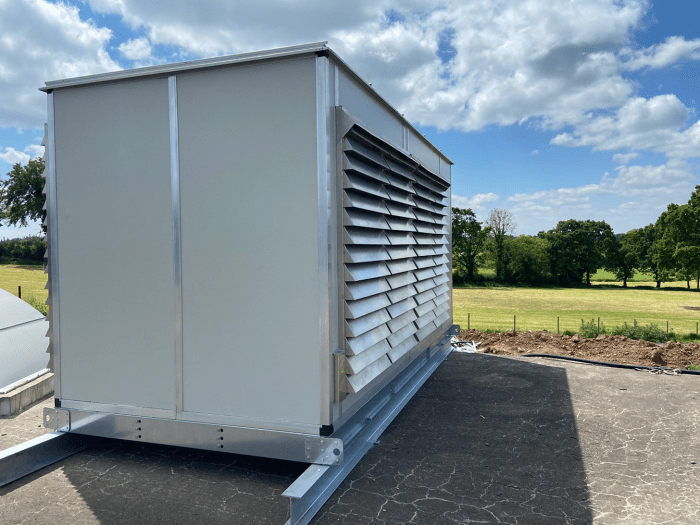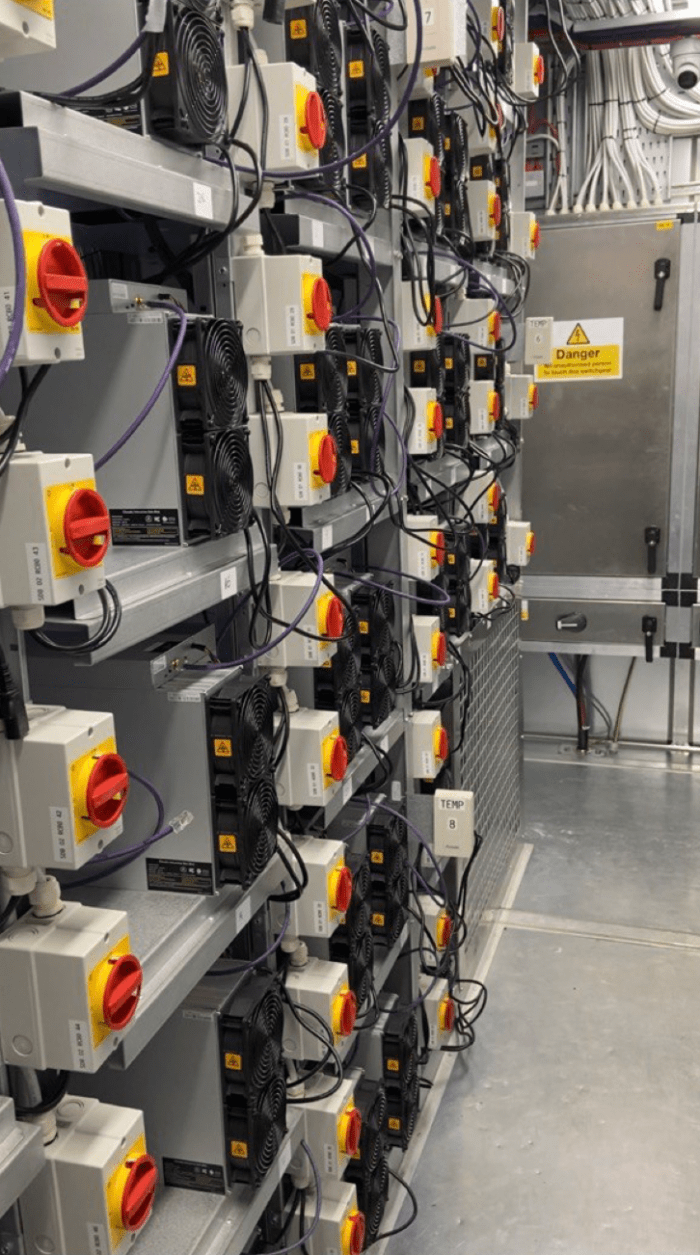Profiting from biogas with Bitcoin Mining – Bitcoin Magazine
This is an opinion editorial by John Quigley, a Bitcoin miner and digital nomad from Ireland. A version of this article was originally published on Adaptive analysis.
For years, a growing divide has formed between Bitcoin miners and BTC-concerned communities around the world. A line has been drawn not only in hash-rate-buzzing mining facilities around the world, but also in social media arenas where anyone with two cents to share on Bitcoin is siding with one side or the other.
On the one hand, there has been a high push towards renewable energy that extends far beyond the Bitcoin mining industry and is a relevant issue in energy-intensive industries worldwide. However, Bitcoin miners have been well placed in the crosshairs of this pressure given the large amounts of energy consumed to power the globally distributed mining network responsible for ensuring that blocks are steadily added to the growing Bitcoin ledger at a rate of approx. . 10 minutes per block. Many Bitcoin miners have caught on to this transition and have explored using hydro, wind and solar power.
On the other hand, a small proportion of miners have remained and even advocated for fossil fuels, pointing to the intermittent problems that most renewables pose to mining and the carbon-intensive production process and questionable lifespan associated with these renewables.
Mining in County Armagh, Ireland
In the upper right corner of Ireland lies a small mining operation that can satisfy the values of both communities. On a picturesque farm in County Armagh, 35 latest generation mining machines are knocked off the grid by a largely unknown power source. These machines are powered from excess energy that this power source cannot sell to the grid, making the costs associated with the electricity virtually zero. On top of this, the power source is completely self-sustaining and requires only a little on-site labor to keep it running smoothly, meaning the machines can benefit from 100% uptime, an important feature that wind, solar and often hydropower fail to offer.
Importantly, this power source is powered entirely by organic waste, producing not only clean energy, but turning waste products into fuel that can be sold to the grid or power local Bitcoin mines. This energy source could be the consistent and clean energy source that Bitcoin miners have been searching for – anaerobic digesters – and to date they remain largely untapped as a power source for bitcoin miners.
Mark Morton, a young, Cork-based professional whose enthusiasm for Bitcoin shines through in every word, was one of the main drivers behind the anaerobic-digestion-powered mining operation in Armagh. Morton is one of the key decision makers at Scilling Mining, one of Ireland’s pioneering Bitcoin and mining focused companies. His work to educate the Irish community about Bitcoin and mining has led him to run a small, office-based mining operationarranging regular face-to-face meetings, and managing one of Ireland’s largest online community groups for Bitcoiners where matters such as political developments, market movements and general industry trends are discussed.
Morton’s work paid off when the owner of the farm in Armagh visited him to learn more about Bitcoin mining, potentially harnessing the excess energy his anaerobic digester produced at his facility. A couple of meetings later and Morton acquired the mining machines and infrastructure setup to make this idea a reality.
As it stands, the mining operation operates 35 latest generation miners with capacity for another 33. At the time of writing, the difficulty means such an operation generates approximately 0.42 BTC monthly, a monthly income of $8,133 at current prices.
This anaerobic digester powered mining operation is not only likely to be the first of its kind in Ireland, but may be the only operation of its kind in the world. Anaerobic digestion is the process of harnessing the internal energy of the waste material to produce biogas, a fuel source consisting on average of 40% to 50% methane and 30% to 40% CO2. Through the use of an engine, this process can create energy on site that can also be connected and sold to the grid with the right infrastructure.
Unlike renewable energy sources such as wind and solar, anaerobic digestion provides 100% uptime if fed with a constant supply of waste. This makes it an attractive supply load for grids that are working towards meeting demands for a higher proportion of renewable energy sources. As a result, some governments have incentivized the deployment of these generators. For example, the UK government established a £10 million fund to help develop such infrastructure. Incentives in the UK led to a proliferation of anaerobic digesters in Northern Ireland, a small segment of the country under British jurisdiction.
Morton noted that in many cases, however, grid connections have failed, leaving farmers who invested heavily in such schemes with excess energy and a lack of revenue streams to pay off the costly infrastructure. Investments in anaerobic digesters can range upwards from £200,000 to £1,000,000 depending on the energy capacity with expected ROI timeframes of four to seven years. However, such ROI figures depend on reliable network connections, and costs can increase radically when it comes to larger projects with cost estimates reaching up to $5,000,000.
Morton has estimated the return on an investment in an on-site mining facility for anaerobic digester owners under a range of price and difficulty conditions. He noted that under most conditions the payback period is about two years, after which the plant owner would generate pure profit that would accelerate the return on their anaerobic digester. Under favorable conditions, Morton estimates that the payback period could be as short as ten months for the on-site mining facility.
Fill the gap
The genius of Scilling Mining is to use Bitcoin mining infrastructure to fill the gap between the energy produced by these anaerobic digesters and the lack of a demand-side outlet, such as an on-site demand load or grid connection. Bitcoin mining fulfills the role of an on-site demand load and monetizes excess energy by performing the fundamental role of validating, collecting and adding transactions to the Bitcoin blockchain.
Morton and Scilling Mining first explored container options to both house and connect the rigs to the power source, but decided the best solution would be to work with the right professionals to build their own custom solution. The result was the Power Vault 68, a container solution that accommodates up to 68 mining machines and is carefully designed for air flow, electricity infrastructure and to meet fire hazard standards.
With over 20,000 anaerobic digesters in operation worldwide and approximately 1,000 new plants being deployed each year, the natural question that arises is how much opportunity there is for partnerships between the owners of such infrastructure and those with expertise on the Bitcoin end . The efforts of Morton and Scilling Mining have certainly eased the pain of an owner of this costly infrastructure. But Morton doesn’t see it stopping there. Scilling Mining has ambitions to have more sites operational by the end of the year and aims to educate anaerobic digester owners across the continent about the potential to monetize their surplus energy with on-site Bitcoin mining facilities.
This model is not new. For years, North American Bitcoin professionals have partnered with and assisted oil and gas producers to help them utilize their excess energy production that is often flared directly into the atmosphere. But now it looks like a relatively new Bitcoin-focused company has discovered Europe’s equivalent. Across Europe, there may be vast amounts of untapped, clean energy with 100% uptime that are ideally positioned to make money through on-site Bitcoin miners.
Thanks to Scilling Mining and a forward-thinking farm owner in the North East of Ireland, there is now a successful proof of concept operating in remote farmland in Ireland highlighting the potential for further partnerships between the anaerobic digester owners and Bitcoin professionals in the years to come.
This is a guest post by John Lee Quigley. Opinions expressed are entirely their own and do not necessarily reflect the opinions of BTC Inc or Bitcoin Magazine.




